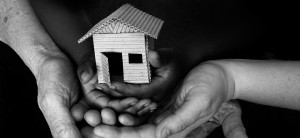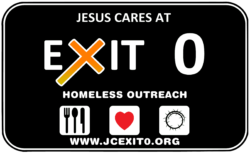About Homelessness

Homelessness occurs when people or households are unable to acquire and/or maintain housing they can afford.
The Big Picture
While circumstances can vary, the main reason people experience homelessness is because they cannot find housing they can afford. It is the scarcity of affordable housing in the United States, particularly in more urban areas where homelessness is more prevalent, that is behind their inability to acquire or maintain housing.
By the numbers:
- There are 552,830 people experiencing homelessness on any given night in the United States in 2018.
- Of that number, 206,286 are people in families, and
- 358,422 are individuals.
- About 15 percent of the homeless population – 83,170 – are considered “chronically homeless,”and
- About 7.2 percent of homeless adults- 40,056– are veterans.These numbers come from point-in-time counts, which are conducted, community by community, on a single night in January every other year. The U.S. Department of Housing and Urban Development (HUD) requires communities to submit this data every other year in order to qualify for federal homeless assistance funds. Many communities conduct counts more regularly.
Focus Areas
There is four specific groups experiencing homelessness:
Families
Homeless families are similar to other poor families.
Typically, families become homeless as a result of some unforeseen financial crisis – a medical emergency, a car accident, a death in the family – that prevents them from being able to hold on to housing.
Most homeless families are able to bounce back from homelessness quickly, with relatively little public assistance. Usually, homeless families require rent assistance, housing placement services, job assistance, and other short-term, one-time services before being able to return to independence and stability.
Youth
Young people often become homeless due to family conflict, including divorce, neglect, or abuse. A large majority of young people experience short-term homelessness, returning back home or to family/friends.Youth homelessness presents a particular challenge for several reasons, including the fact that there is very little definitive data on the population, as this group often doesn’t interact with standard homeless assistance programs or government agencies. Moreover, the solutions that have been identified for homelessness in general are often not applicable to minors (who are, for example, ineligible to rent an apartment). These special challenges mean that solutions to youth homelessness require innovation.
Veterans
Veterans often become homeless due to war-related disabilities. For a variety of reasons – physical disability, mental anguish, post-traumatic stress, etc. – many veterans find readjusting to civilian life difficult. Difficulties readjusting can give rise to dangerous behaviors, including addiction, abuse, and violence, which, coupled with the difficulties, can lead to homelessness.Preventive measures, including job placement services, medical services, housing assistance, and the like, can mitigate the risk of veterans experiencing homelessness.
Chronic Homelessness
Chronic homelessness is often the public face of homelessness. “Chronic” has a specific definition, involving either long-term and/or repeated bouts of homelessness coupled with disability (physical or mental). People experiencing chronic homelessness often end up living in shelters and consume a plurality of the homeless assistance system’s resources.It’s a common misconception that this group represents the majority of the homelessness population. Rather, they account for just fewer than 16 percent of the entire homeless population.
Fortunately, there has been significant progress to address chronic homelessness in the last decade. The number of individuals experiencing chronic homelessness has declined by 19.3 percent since 2007.
